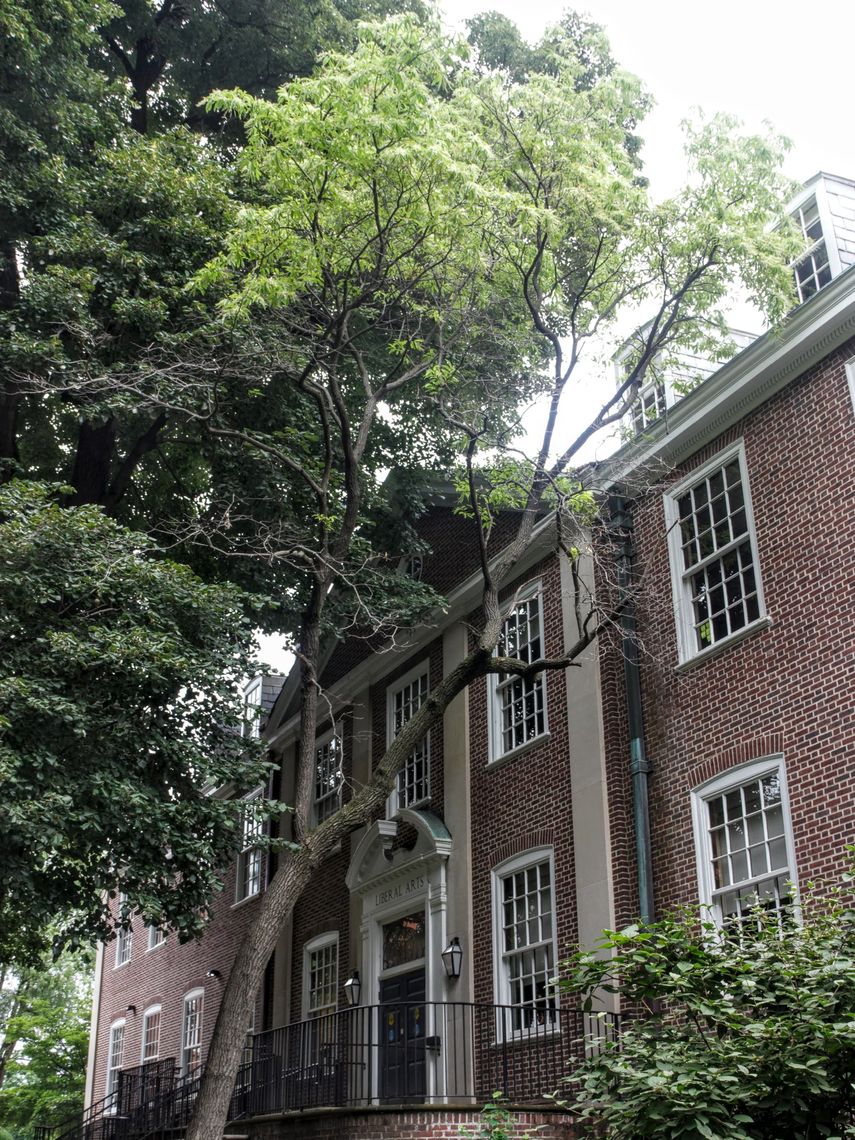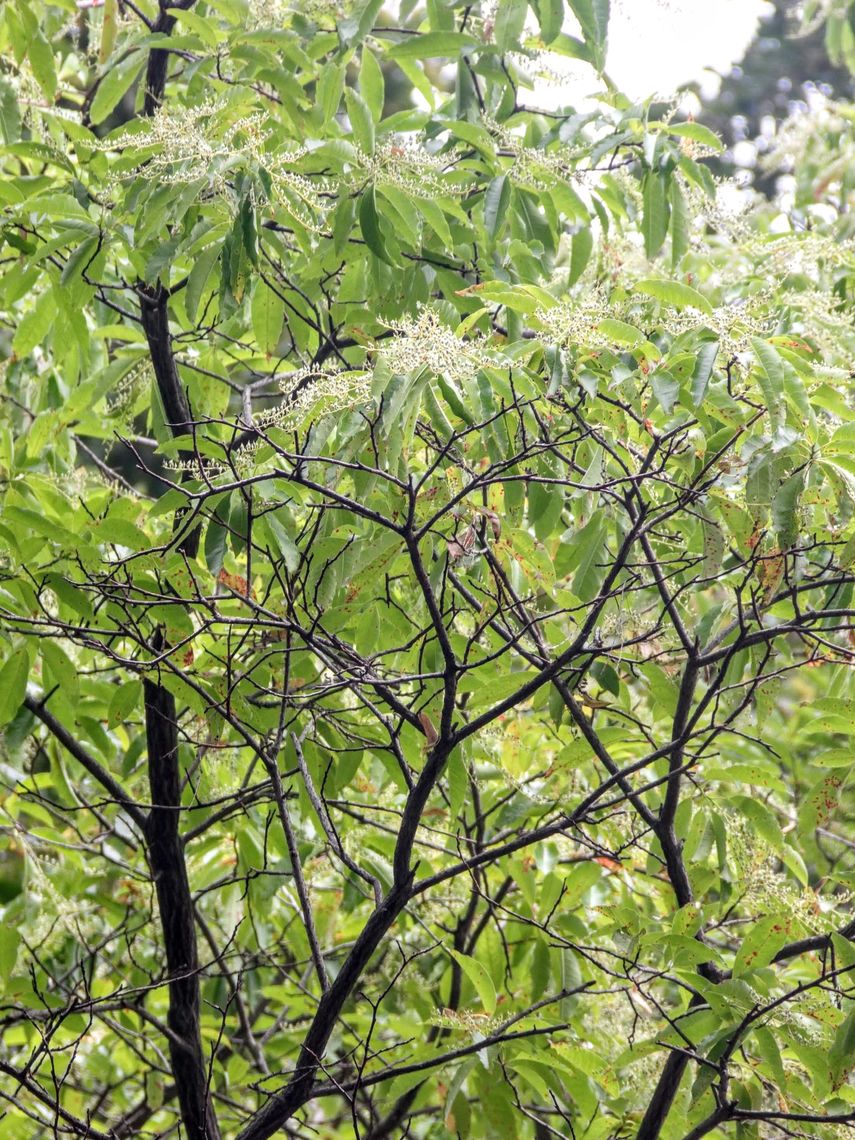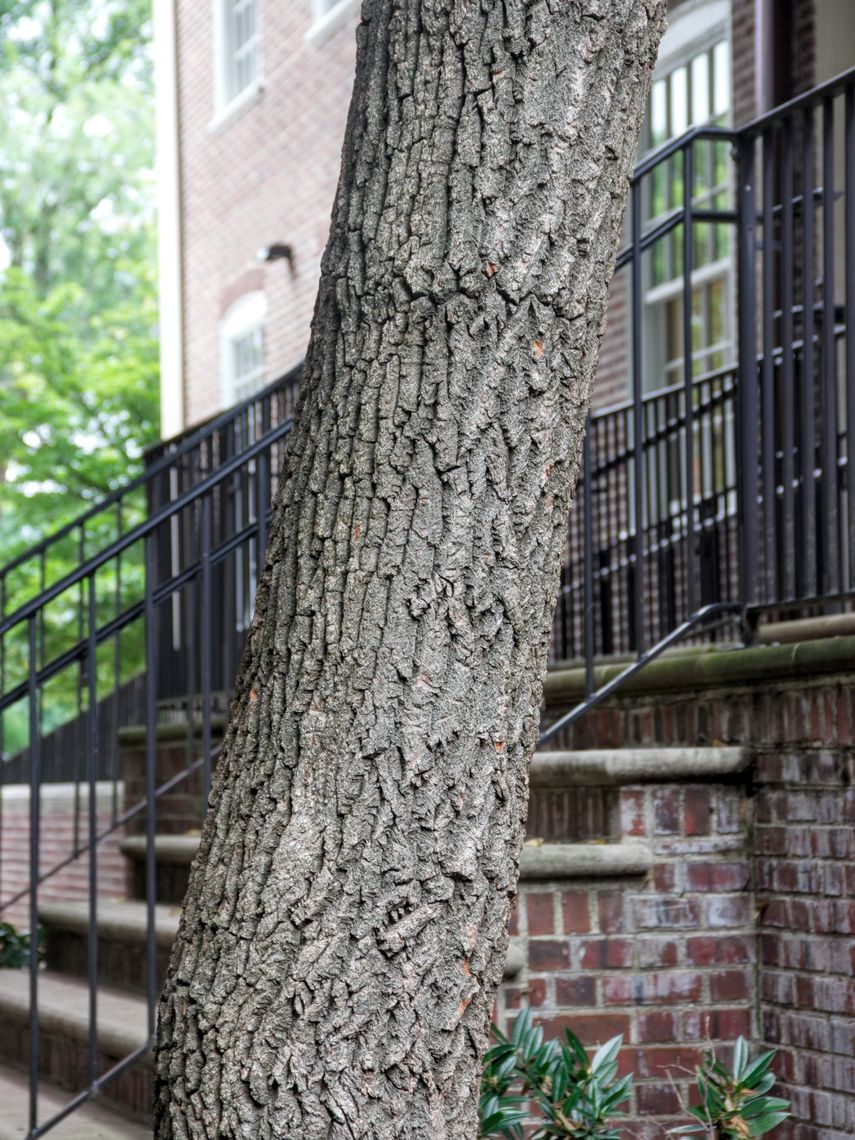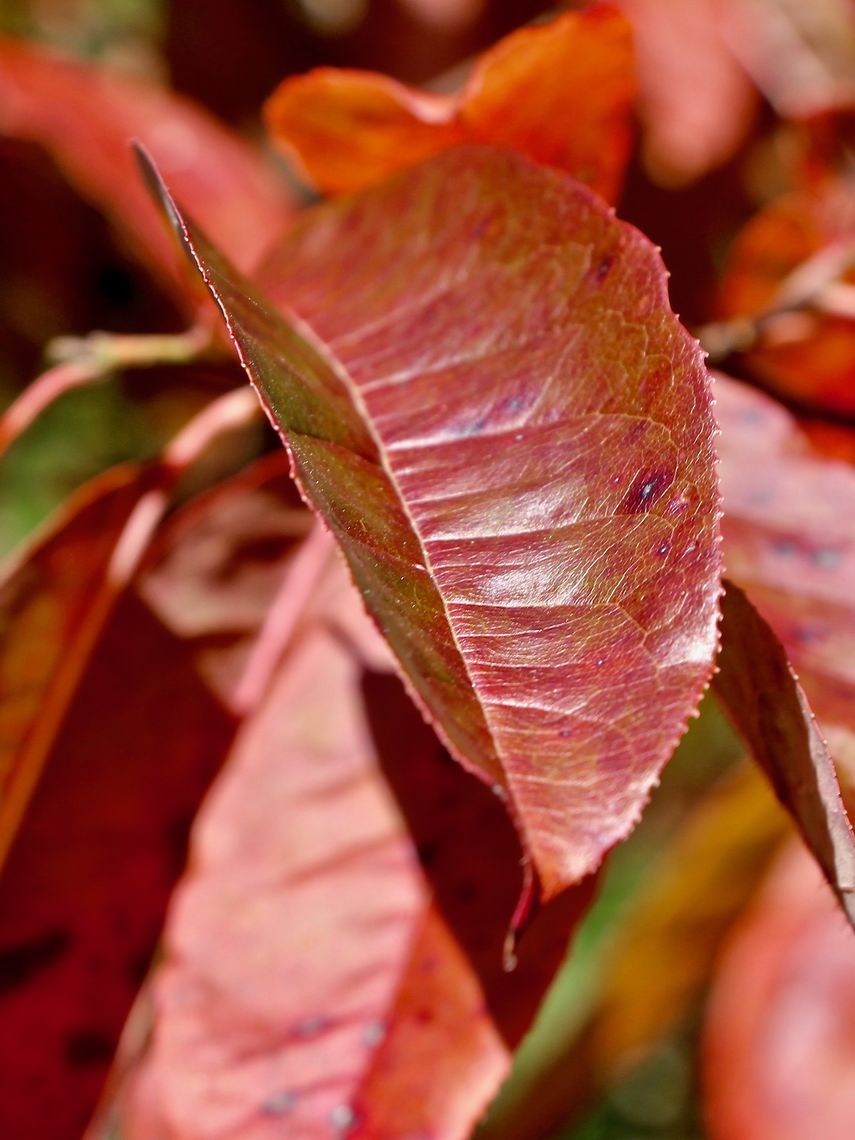Sourwood (Oxydendrum arboreum)
The sourwood tree has a pyramidal shape and drooping branches. Its leaves are toothed, elongated, and pointed. They turn shades of red and yellow in the fall. These leaves have a sour taste, hence the tree's common name. Very small, fragrant, white flowers appear in the summer in long clusters. Bees are often attracted to these flowers and sourwood honey is said to be a highly prized product. These flowers give way to small capsules that turn a silver-gray in the fall. These capsules usually persist into the winter.
Family: Ericaceae (Heath)
Characteristics: The 3-inch to 8-inch-long leaves are dark green, toothed, and have an elongated shape with pointed ends. In the fall, leaves turn yellow, red, and marron. In June-July, small, fragrant, white flowers appear on 4-10 inch long panicles. These flowers are followed by capsules that turn a silver-gray when they ripen in September. These capsules remain on the tree throughout the winter. Bark is gray-brown and deeply ridged, often forming a square pattern. This tree has a pyramidal shape and has drooping branches. It usually grows 25-30 feet high and 20 feet wide.
Foliage: Deciduous (leaves lost seasonally)
Geographic Origin: Eastern and southeastern United States
Cultivation Notes: Requires low maintenance. Does best in full sun, though can tolerate part shade. Prefers acidic, moist, and well-drained soils. This tree is intolerant to drought and air pollution.
Number on Campus: 2
Sources: Dirr, Morton Arboretum, Missouri Botanical Garden




